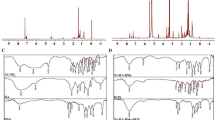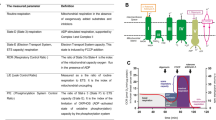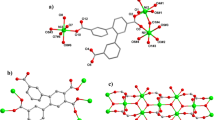Abstract
Breast cancer is the leading cause of cancer-related death for women, and multidrug resistance (MDR) is the major obstacle faced by chemotherapy for breast cancer. We have previously synthesized a doxorubicin (DOX) derivative by conjugating DOX with triphenylphosphonium (TPP) to achieve mitochondrial delivery, which induced higher cytotoxicity in drug-resistant breast cancer cells than DOX itself. Due to its amphiphilicity, TPP-DOX is difficult to physically entrap in nanocarriers. Thus, we linked it to hyaluronic acid (HA) by a novel ionic bond utilizing the specific bromide ion of TPP to form supra-molecular self-assembled structures (HA-ionic-TPP-DOX). The product was analyzed uisng 1H-NMR, 13C-NMR and mass spectrometry. The HA nanocarriers (HA-ionic-TPP-DOX) were shown to self-assemble into spherical nanoparticles, and sensitive to acidic pH in terms of morphology and drug release. Compared with free DOX, HA-ionic-TPP-DOX produced much greater intracellular DOX accumulation and mitochondrial localization, leading to increased ROS production, slightly decreased mitochondrial membrane potential, increased cytotoxicity in MCF-7/ADR cells and enhanced tumor targeting in vivo. In xenotransplant zebrafish model with the MCF-7/ADR cell line, both TPP-DOX and HA-ionic-TPP-DOX inhibited tumor cell proliferation without inducing significant side effects compared with free DOX. In addition, we observed a better anti-tumor effect of HA-ionic-TPP-DOX on MCF-7/ADR cells in zebrafish than that of TPP-DOX treatment. Furthermore, HA-ionic-DOX-TPP exhibited favorable biocompatibility and anti-tumor effects in MCF-7/ADR tumor-bearing nude mice in comparison with the effects of TPP-DOX and DOX, suggesting the potential of HA-ionic-TPP-DOX for the targeted delivery and controlled release of TPP-DOX, which can lead to the sensitization of resistant breast tumors.
Similar content being viewed by others
Log in or create a free account to read this content
Gain free access to this article, as well as selected content from this journal and more on nature.com
or
References
Higgins CF. Multiple molecular mechanisms for multidrug resistance transporters. Nature 2007; 446: 749–57.
Kapse-Mistry S, Govender T, Srivastava R, Yergeri M. Nanodrug delivery in reversing multidrug resistance in cancer cells. Front Pharmacol 2014; 5: 159.
Giljohann DA, Seferos DS, Prigodich AE, Patel PC, Mirkin CA. Gene regulation with polyvalent siRNA-nanoparticle conjugates. J Am Chem Soc 2009; 131: 2072–3.
He C, Liu D, Lin W. Self-assembled nanoscale coordination polymers carrying siRNAs and cisplatin for effective treatment of resistant ovarian cancer. Biomaterials 2015; 36: 124–33.
Nakamura K, Abu Lila AS, Matsunaga M, Doi Y, Ishida T, Kiwada H. A double-modulation strategy in cancer treatment with a chemotherapeutic agent and siRNA. Mol Ther 2011; 19: 2040–7.
Creixell M, Peppas NA. Co-delivery of siRNA and therapeutic agents using nanocarriers to overcome cancer resistance. Nano Today 2012; 7: 367–79.
Cohen K, Emmanuel R, Kisin-Finfer E, Shabat D, Peer D. Modulation of drug resistance in ovarian adenocarcinoma using chemotherapy entrapped in hyaluronan-grafted nanoparticle clusters. Acs Nano 2014; 8: 2183–95.
He CB, Poon C, Chan C, Yamada SD, Lin WB. Nanoscale coordination polymers codeliver chemotherapeutics and sirnas to eradicate tumors of cisplatin-resistant ovarian cancer. J Am Chem Society 2016; 138: 6010–9.
Gewirtz DA. A critical evaluation of the mechanisms of action proposed for the antitumor effects of the anthracycline antibiotics Adriamycin and daunorubicin. Biochem Pharmacol 1999; 57: 727–41.
Green DR, Reed JC. Mitochondria and apoptosis. Science 1998; 281: 1309–12.
Gulbins E, Dreschers S, Bock J. Role of mitochondria in apoptosis. Exp Physiol 2003; 88: 85–90.
Nishikawa T, Edelstein D, Du XL, Yamagishi S, Matsumura T, Kaneda Y, et al. Normalizing mitochondrial superoxide production blocks three pathways of hyperglycaemic damage. Nature 2000; 404: 787–90.
Morino K, Petersen KF, Dufour S, Befroy D, Frattini J, Shatzkes N, et al. Reduced mitochondrial density and increased IRS-1 serine phosphorylation in muscle of insulin-resistant offspring of type 2 diabetic parents. J Clin Invest 2005; 115: 3587–93.
Chen LB. Mitochondrial membrane potential in living cells. Annu Rev Cell Biol 1988; 4: 155–81.
Neupert W, Herrmann JM. Translocation of proteins into mitochondria. Annu Rev Biochem 2007; 76: 723–49.
Kawamura E, Yamada Y, Yasuzaki Y, Hyodo M, Harashima H. Intracellular observation of nanocarriers modified with a mitochondrial targeting signal peptide. J Biosci Bioeng 2013; 116: 634–7.
Murphy MP. Selective targeting of bioactive compounds to mitochondria. Trends Biotechnol 1997; 15: 326–30.
Murphy MP. Targeting lipophilic cations to mitochondria. Biochim Biophys Acta 2008; 1777: 1028–31.
Murphy MP, Smith RAJ. Targeting antioxidants to mitochondria by conjugation to lipophilic cations. Annu Rev Pharmacol 2007; 47: 629–56.
Zhou J, Zhao WY, Ma X, Ju RJ, Li XY, Li N, et al. The anticancer efficacy of paclitaxel liposomes modified with mitochondrial targeting conjugate in resistant lung cancer. Biomaterials 2013; 34: 3626–38.
Zhang BF, Xing L, Cui PF, Wang FZ, Xie RL, Zhang JL, et al. Mitochondria apoptosis pathway synergistically activated by hierarchical targeted nanoparticles co-delivering siRNA and lonidamine. Biomaterials 2015; 61: 178–89.
Sharma A, Soliman GM, Al-Hajaj N, Sharma R, Maysinger D, Kakkar A. Design and evaluation of multifunctional nanocarriers for selective delivery of coenzyme q10 to mitochondria. Biomacromolecules 2012; 13: 239–52.
Bielski ER, Zhong Q, Brown M, da Rocha SRP. Effect of the Conjugation Density of Triphenylphosphonium cation on the mitochondrial targeting of poly(amidoamine) dendrimers. Mol Pharm 2015; 12: 3043–53.
Malhi SS, Murthy RS. Delivery to mitochondria: a narrower approach for broader therapeutics. Expert Opin Drug Deliv 2012; 9: 909–35.
Han M, Vakili MR, Abyaneh HS, Molavi O, Lai R, Lavasanifar A. Mitochondrial delivery of doxorubicin via triphenylphosphine modification for overcoming drug resistance in MDA-MB-435/DOX cells. Mol Pharm 2014; 11: 2640–9.
Bar-Ilan O, Albrecht RM, Fako VE, Furgeson DY. Toxicity assessments of multisized gold and silver nanoparticles in zebrafish embryos. Small 2009; 5: 1897–910.
Yang J, Shimada Y, Olsthoorn RC, Snaar-Jagalska BE, Spaink HP, Kros A. Application of coiled coil peptides in liposomal anticancer drug delivery using a zebrafish xenograft model. Acs Nano 2016; 10: 7428–35.
Cai S, Xie YM, Bagby TR, Cohen MS, Forrest ML. Intralymphatic chemotherapy using a hyaluronan-cisplatin conjugate. J Surg Res 2008; 147: 247–52.
Fan X, Zhao X, Qu X, Fang J. pH sensitive polymeric complex of cisplatin with hyaluronic acid exhibits tumor-targeted delivery and improved in vivo antitumor effect. Int J Pharm 2015; 496: 644–53.
Brown MB, Jones SA. Hyaluronic acid: a unique topical vehicle for the localized delivery of drugs to the skin. J Eur Acad Dermatol 2005; 19: 308–18.
Boddapati SV, D'Souza GGM, Erdogan S, Torchilin VP, Weissig V. Organelle-targeted nanocarriers: specific delivery of liposomal ceramide to mitochondria enhances its cytotoxicity in vitro and in vivo. Nano Lett 2008; 8: 2559–63.
Theodossiou TA, Sideratou Z, Katsarou ME, Tsiourvas D. Mitochondrial delivery of doxorubicin by triphenylphosphonium-functionalized hyperbranched nanocarriers results in rapid and severe cytotoxicity. Pharm Res 2013; 30: 2832–42.
Biswas S, Dodwadkar NS, Deshpande PP, Torchilin VP. Liposomes loaded with paclitaxel and modified with novel triphenylphosphonium-PEG-PE conjugate possess low toxicity, target mitochondria and demonstrate enhanced antitumor effects in vitro and in vivo. J Control Release 2012; 159: 393–402.
Simon HU, Haj-Yehia A, Levi-Schaffer F. Role of reactive oxygen species (ROS) in apoptosis induction. Apoptosis 2000; 5: 415–8.
Haldi M, Ton C, Seng WL, Mcgrath P. Human melanoma cells transplanted into zebrafish proliferate, migrate, produce melanin, form masses and stimulate angiogenesis in zebrafish. Angiogenesis 2006; 9: 139–51.
Gao X, Wang S, Wang B, Deng S, Liu X, Zhang X, et al. Improving the anti-ovarian cancer activity of docetaxel with biodegradable self-assembly micelles through various evaluations. Biomaterials 2015; 53: 646–58.
Acknowledgements
This study was supported by the National Basic Research Program of China (No 2014CB931901), the National Natural Science Foundation of China (No 81373346, 81102392, 81572952, 81673022), the Zhejiang Provincial Natural Science Foundation of China (No LY15H300001), the Fundamental Research Funds for the Central Universities (No 2017XZZX011-04), the Zhejiang Medical and Health Science and Technology Plan Project (No 2016KYB109), and the Zhejiang Provincial Natural Science Foundation of China (No LY17H160013).
Author information
Authors and Affiliations
Corresponding authors
Rights and permissions
About this article
Cite this article
Liu, Hn., Guo, Nn., Guo, Ww. et al. Delivery of mitochondriotropic doxorubicin derivatives using self-assembling hyaluronic acid nanocarriers in doxorubicin-resistant breast cancer. Acta Pharmacol Sin 39, 1681–1692 (2018). https://doi.org/10.1038/aps.2018.9
Received:
Accepted:
Published:
Issue date:
DOI: https://doi.org/10.1038/aps.2018.9
Keywords
This article is cited by
-
Meta analysis of bioactive compounds, miRNA, siRNA and cell death regulators as sensitizers to doxorubicin induced chemoresistance
Apoptosis (2022)
-
Edelfosine nanoemulsions inhibit tumor growth of triple negative breast cancer in zebrafish xenograft model
Scientific Reports (2021)
-
Cinnamaldehyde protects against rat intestinal ischemia/reperfusion injuries by synergistic inhibition of NF-κB and p53
Acta Pharmacologica Sinica (2020)



